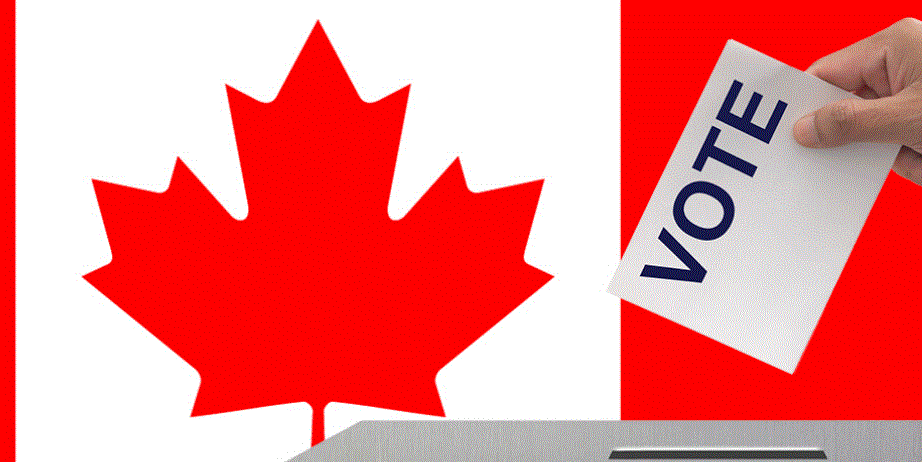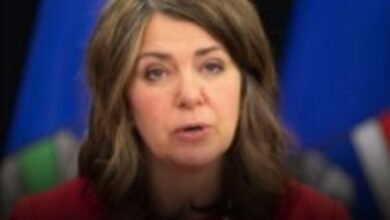Canada Global(Web News)Elections will be held in Canada today to elect a new federal parliament.
A close race is expected between Mark Carney and Conservative veto leader Pierre Poilieu, with Prime Minister Mark Carney’s Liberal Party likely to contest the election. Election results in Canada will begin coming in after 7:30 p.m. New data from Ipsos shows Mark Carney’s Liberal Party holding a four-point lead over Pierre Poilieu’s Conservatives heading into Monday’s general election. The tight national race obscures the Liberals’ advantage in the key provinces of Ontario and Quebec that will likely determine whether the party gets a fourth consecutive mandate from Canadian voters. The survey shows the Liberals with 42 per cent support nationwide, followed by the Conservatives at 38 per cent and single-digit support – just nine per cent – for Jagmeet Singh’s New Democrats. The survey also shows that, with one day left, most Canadian voters have made up their minds. “At this final juncture, only five per cent of Canadians are undecided, and of those who have made up their minds, 71 per cent are ‘absolutely certain’ about their choice,” Ipsos said in a statement. “Now that the polls are closed, the question now turns to voter turnout and motivation.”
The survey shows Carney’s Liberals leading in every region of the country except Alberta, Saskatchewan and Manitoba, and that’s bad news for the Conservatives. “The key to a potential Liberal victory is found in Canada’s most populous provinces: in Ontario, the Liberals have an eight-point lead over the Conservatives, and in Quebec, the Liberals have a double-digit lead over all other rivals,” Ipsos said in a statement.
Chrétien predicted a Liberal majority win on Monday as leaders targeted key ridings. “Furthermore, the Liberals are leading by large margins in the Atlantic, and cling to a small advantage in British Columbia, one of Canada’s most competitive regions – particularly because of the NDP’s collapse.” Poilievre needed to make a move to form a government in Ontario, given the large number of seats in Canada’s most populous province. According to Ipsos, the Liberals maintain an eight percentage point lead in that province – 47 per cent to the Conservatives’ 39 per cent. In Quebec, the Liberals are at 40 per cent, followed by the Bloc Québécois at 25 per cent, the Conservatives at 24 per cent and the New Democrats in fourth place with just six per cent support.
British Columbia, which has been predicted to be a three-way race for most of the campaign, has the Liberals at 42 per cent, the Conservatives at 39 per cent and the NDP at 13 per cent. The Green Party has three per cent support in the province, potentially putting party co-leader Elizabeth May’s Saanich-Gulf Islands seat at risk.
“It’s west of the Ontario-Manitoba border and then it’s east of the Manitoban border. And east of the Ontario-Manitoba border, the Liberals have a lead in every single region. And unfortunately for the Conservative Party, that’s where the majority of the seats are in the election.”
Support for both parties also appears to be split by generation – although in a reversal in Canada’s recent political history, older Canadians seem to be breaking for Carney’s Liberals more than the Conservative Party, who generally perform better among Canadians aged 55 and over. “Another key to the Liberals’ success is their large lead among those aged 55+, who are generally the most likely to show up and vote. Nearly half (48 per cent) of voters aged 55 and over favor the Liberals, while 34 per cent say they would vote Conservative.”
“In contrast, among those 35-54, the Conservatives lead the Liberals by 43 per cent to 38 per cent. Among young voters aged 18-34, the Liberals and Conservatives are at 38 per cent and the NDP has a slight improvement (15 per cent).”
Looking at recent trends, Ipsos found that the Conservatives’ advantage among male voters has narrowed, with 42 percent of male voters backing Poilievre’s party to 40 percent supporting the Liberals. Among female voters, 44 percent trail Carney’s party while just 35 percent are supporting the Conservatives.
“As always, voter turnout will decide the composition of parliament, and the size of the Liberal victory will come down to how motivated each party’s supporters are to vote, and which party can translate those good intentions into cast ballots,” Ipsos said





